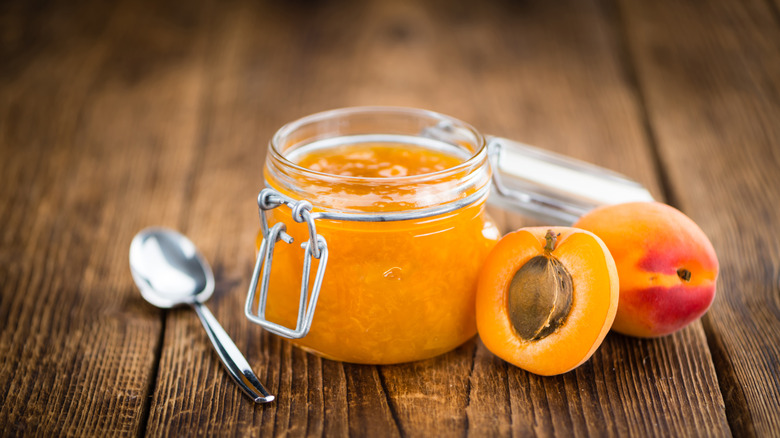Mary Berry's Jam Hack For Better Frosted Cakes
If there's one person whose baking advice we trust more than most, it's Mary Berry. The beloved food personality, author of more than 80 cookbooks, and judge of "The Great British Bake Off" is practically royalty when it comes to whipping up seriously scrumptious treats.
And while Berry's bakes are indeed top tier, that doesn't mean she's above using a cheeky shortcut or two to get there — this trifle that uses canned custard, for example. She also has a useful shortcut for ensuring a professional finish to cakes, and it involves an ingredient that's probably sitting in your kitchen cupboard at this very moment. We're talking about jam, which Berry recommends applying to your cake as a sort of crumb coat (a thin layer of frosting that seals in crumbs and prevents them from showing up in subsequent layers of frosting) that will also impart some moisture and a little extra flavor. "This seals the cake and acts as a base for icing to be added, meaning a constant top level that doesn't have bits of cake or crumbs lurking within," she explains in an article detailing her top 10 baking tips for BBC Good Food.
How to put Mary Berry's jam hack into action
Mary Berry's preferred jam for this hack is apricot, which offers a subtler flavor than other varieties and already has proven experience in coating cakes (apricot jam is traditionally slathered over Christmas cakes, either as a glaze or as an adhesive beneath marzipan and royal icing). She suggests warming the jam first — which loosens it for easier spreading — before straining it through a sieve to remove any lumps and brushing it over the top and sides of your cake.
That said, nothing is stopping you from using another flavor of jam. Just be sure to keep in mind the flavor of the frosting you intend to use, along with that of the cake itself. Apricot jam is obviously a good choice for fruitcakes, along with anything of a vanilla, coconut, or citrus nature. Berry or cherry jams, on the other hand, are a tasty option for cakes or frosting with a richer flavor, like coffee or chocolate.
When the time for glazing approaches, you want to cover every last inch of the cake's surface, before allowing the jam to set — just as you would a regular crumb coat — and moving on to the big finale, aka frosting (you could even use another shortcut here by combining store-bought frosting with whipped cream). Follow these tips from the Queen of Cakes, and we promise you'll be rewarded with a beautifully frosted cake, worthy of "The Great British Bake Off" itself.

